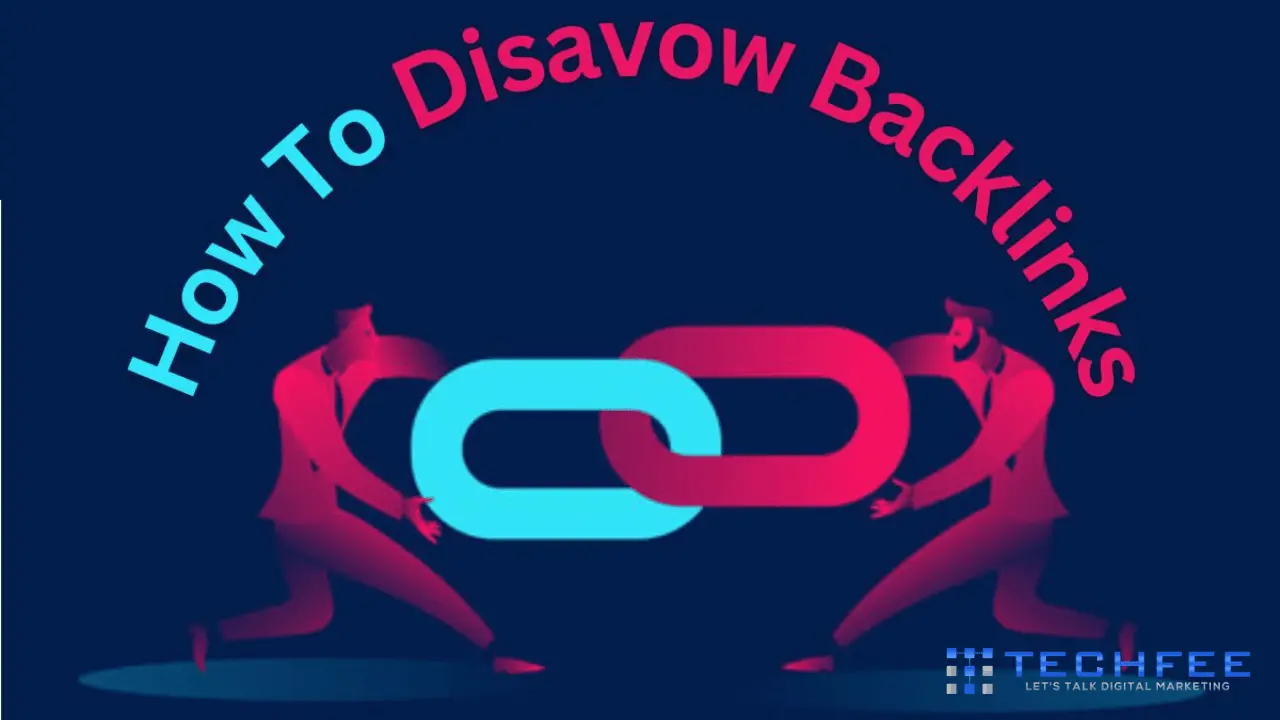When it comes to SEO, knowing How to Disavow Bad Links can make the difference between going down or up in the search engine results.
Understanding the ins and outs of bad links is essential for any smart marketer or website owner in the vast world of the internet, where every link can lead to success or failure.
Think about this: You worked very hard on your website and put all of your heart and soul into the content, but now you’re falling in the search engine results because of bad links.
Don’t worry, though, because this complete guide holds the key to freedom. Come with me on a trip through the maze of SEO as we crack the mysteries of bad links, negotiate the dangerous waters of their risks, and come out on top knowing how to disavow them.
We’ll leave no stone unturned as we walk you through both best practices and warning tales, from finding these shady links to implementing advanced techniques.
Ready? Then get ready to use the power of disavowing bad links. Because in SEO, knowledge really is power.
Understanding Bad Links
Knowing how to spot bad links is one of the most important parts of any good SEO plan.
In the eyes of search engines, bad links are ones that make your site look less trustworthy and reliable. They appear in different forms, and each has its own bad effects.
Backlinks that are spammy, which are often made using “black hat” methods, give your site a lot of irrelevant, low-quality links that hurt its image.
Similarly, low-quality directory links and links from websites that aren’t connected to yours can make your content less relevant and authoritative, which can make it harder for you to move up in search engine results.
If you know about these different kinds of bad links, you can take steps to find them and remove them, which will improve your SEO strategy and make sure your website does well in the digital world.
Risks Associated with Bad Links
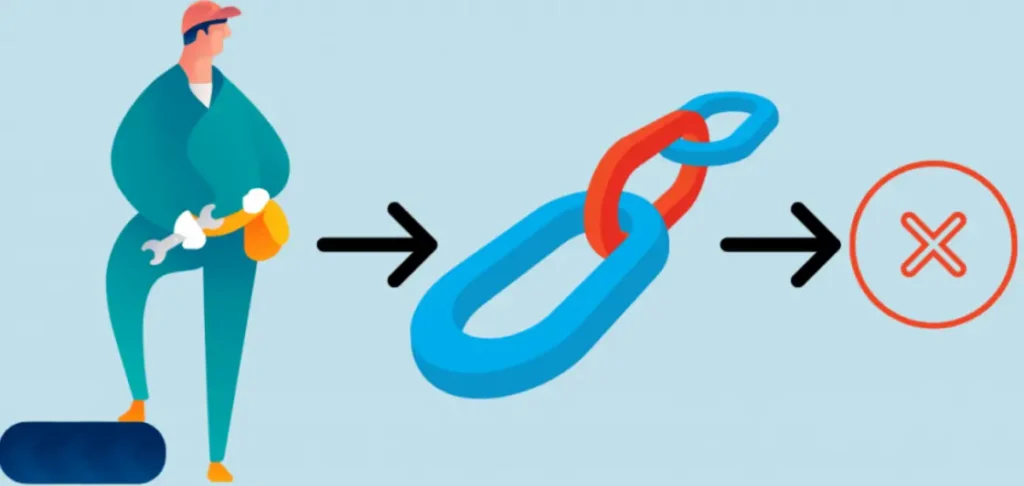
In SEO, the risks that come with bad links are very real and can throw a shadow over even the best-thought-out plans.
One of the biggest problems right away is that they hurt search engine results. Search algorithms are meant to put relevance and trustworthiness first. Websites that link to spammy or irrelevant pages are punished by being pushed to the bottom of search results pages.
Furthermore, the effects go beyond just results; search engines such as Google may punish websites that are caught using dishonest link-building methods.
These punishments can be anything from a drop in scores to being banned completely, which will make it much harder for people to find and trust you online.
Because of this, it is very important to know about and reduce the risks that come with bad links if you want to keep your SEO efforts honest and successful.
Identifying Bad Links
A complete look at your website’s backlink profile is the first step to finding bad links, which is an important part of improving your SEO strategy.
Google Search Console is a good place to start because it shows you which websites are linking to yours. Third-party tools for link analysis, on the other hand, are necessary to get a better idea of the quality and usefulness of these ties.
Tools like Moz, Ahrefs, and SEMrush let you check the authority, trustworthiness, and context of backlinks with a lot of different metrics and data.
Even though these tools are very advanced, human review is still an important part of the process. You can tell the good links from the bad by carefully looking at each one and seeing how well it fits with your website’s niche and content. This will set you up for successful disavowal and improvement.
Assessing the Impact of Bad Links
One important part of fine-tuning your SEO plan for best results is figuring out how bad links affect your site.
To figure out how traffic and rankings change when bad links are present, one way is to look at these measures.
A sudden drop in traffic or a drop in search engine results is often a sign that these kinds of links are doing damage.
Also, keeping an eye on how your link profile changes over time can give you useful information about how your website’s backlinks are changing.
By keeping a close eye on the number of new links coming in and the removal or disavowal of bad ones, you can deal with any problems before they happen and guide your SEO efforts toward long-term success and growth.
The Process of Disavowing Bad Links
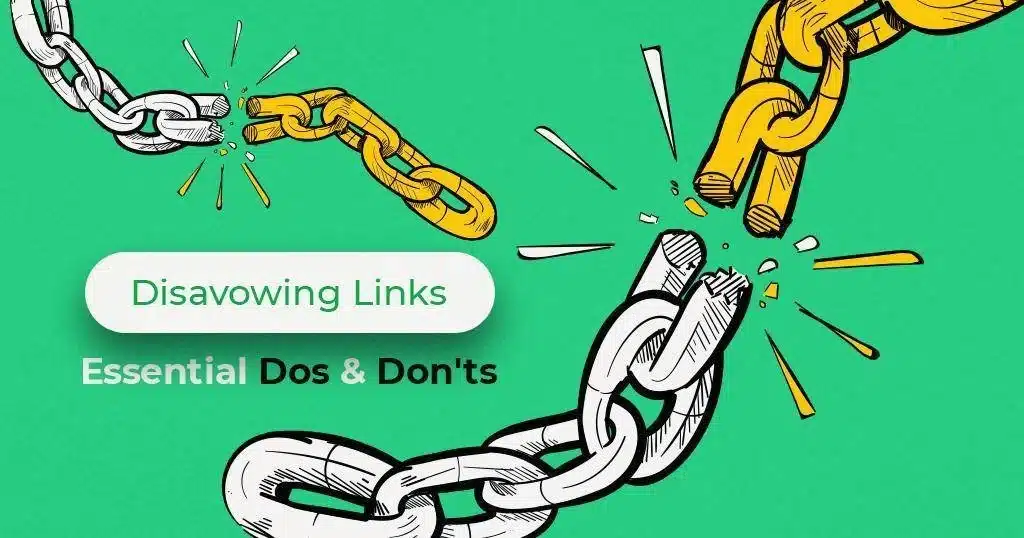
The process of removing bad links is a smart one that starts with careful planning.
Preparation Steps Before Disavowing:
- Conduct a thorough audit of your website’s backlink profile.
- Identify and compile a list of undesirable links.
Creating a Disavow File:
- List the URLs of bad links in a text file.
- Format the file according to Google’s specifications.
- Each link should be on a separate line, preceded by the “disavow” directive.
Submitting the Disavow File to Google:
- Utilize the Disavow Links tool within Google Search Console.
- Upload the disavow file containing the list of bad links.
- Understand that immediate results may not occur, but this action prompts Google to reassess your website’s link profile.
Best Practices for How to Disavow Bad Links
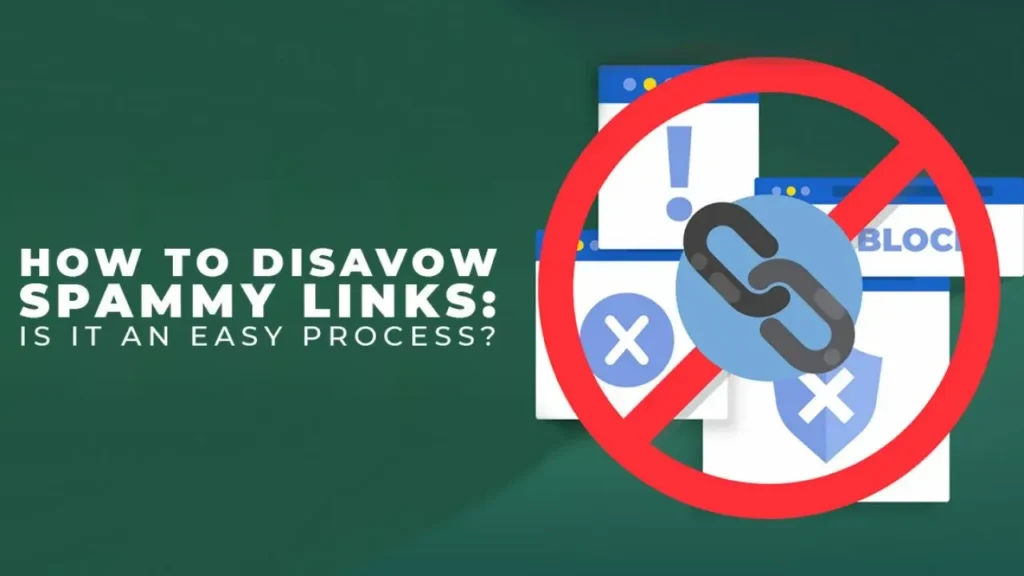
Following best practices can make all the difference in how well your SEO plan works when it comes to removing bad links:
- Decide which links to disavow first by focusing on the ones that are most likely to hurt your website’s trustworthiness and authority. This could include spammy or useless links that have a low site authority.
- Keep your deleted files organized by grouping links based on where they came from or how much damage they caused. Keeping this file organized and easy to find makes management and changes go more smoothly.
- You need to make sure that you regularly update the deleted file to reflect any changes to your website’s link profile.
If you find new links or remove old ones, you should quickly update the deleted file to ensure it is correct and still works to protect your website’s SEO.
If you follow these best practices, you can get the most out of disavowing bad links and take your SEO plan to new heights of success.
Advanced Techniques for Disavowing Bad Links
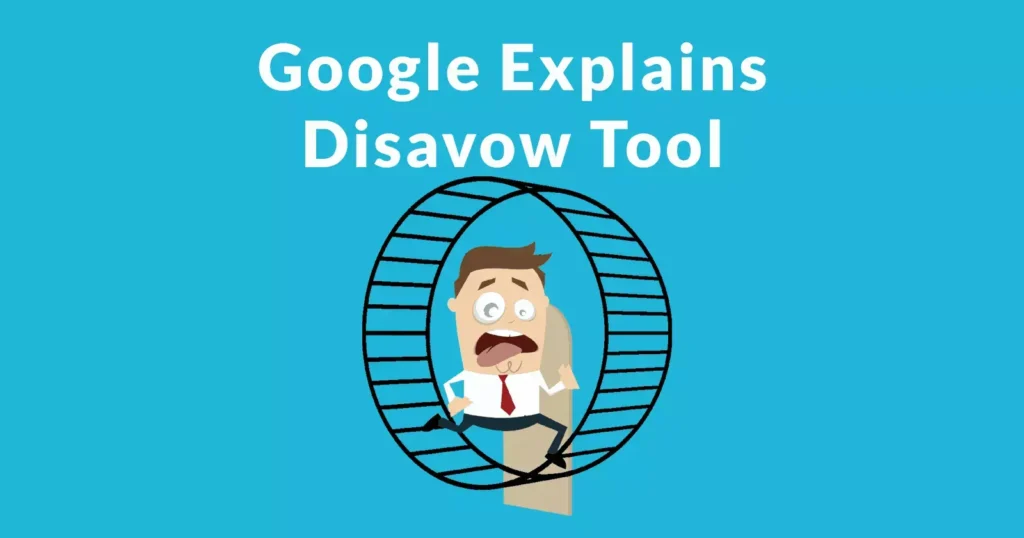
When you learn more about disavowing bad links, more advanced methods can help you be more precise and effective in your work.
Using Google’s Link Disavow Tool makes it easier to flag and ignore bad links, giving you more control over the links that lead to your website.
Using Regex (regular expressions) for disavowal also lets you target specific patterns or kinds of links with surgical precision, giving you a more nuanced way to get rid of unwanted connections.
When dealing with domain-level links that are bad for your SEO, you need to be smart about how you cancel them. By looking at these links’ effects on a bigger picture and disavowing whole domains instead of individual URLs, you can effectively lessen the damage they do to your website’s image and search engine rankings.
When you use these advanced techniques, you gain the tools and knowledge you need to maximize the benefits of disavowing bad links and make your SEO plan more successful than ever.
Common Mistakes to Avoid
When removing bad links to improve your SEO strategy, it’s important to be careful and stay away from common mistakes that could slow you down.
One mistake that people make is disavowing all links without thinking about it first.
It may be easy to ignore all links, but this can hurt the credibility of your website by ignoring links that could be useful. It’s also important to keep an eye on your backlink profile on a daily basis to find out about any new or bad links that may appear.
Not taking this important step leaves your website open to the bad effects of bad links that go unnoticed. Keeping your deleted file up to date is also important.
If you don’t, new links may continue to hurt your SEO performance over time. If you avoid these common mistakes and take a planned, proactive approach to removing bad links, you can get the most out of your SEO strategy and take your website to new heights of success.
Measuring the Effectiveness of Disavowal
Finding out how well disavowing bad links works is important for figuring out how well your SEO is working and making changes to your plan for the best results.
One way is to keep track of how ranks change after the disavowal process. You can tell if getting rid of bad links has made your website more visible and relevant by keeping an eye on its place in search engine results pages.
Also, it’s important to keep a close eye on your website’s traffic and click-through rates, as these metrics show how engaged your users are and how healthy your website is generally.
Dropping in traffic or click-through rates could mean that the disavowal process needs to be improved or that your SEO approach needs to be improved in other ways.
By carefully keeping an eye on these key performance indicators, you can figure out how well disavowing bad links is working and be sure that your efforts are actually improving your website’s On Page and Technical SEO specially.
Expert Insights and Tips
Recommendations from SEO experts are very helpful when you want to improve your SEO strategy by getting rid of bad links. Experts like Backlinko say that you should carefully look at your backlink profile and stress how important it is to find “toxic” links that could hurt your website’s ranking.
Also, comments from leaders in the field about disavowing show how important it is to keep up with search engine rules and algorithms.
People who own websites can use the power of disavowal to protect their online identity and take their SEO to new heights if they listen to what these experts say.
Conclusion
In conclusion, disavowing bad links is essential to any strong SEO strategy. Website owners can protect their online presence from bad effects by fully knowing what bad links are and the risks they pose, as well as using careful methods to find and evaluate their effects.
The strategic disavowal method described in this guide gives webmasters a way to eliminate unwanted backlinks that make their site stronger and healthier.
Businesses and people can improve their SEO and stay ahead in the digital world by following best practices, avoiding common mistakes, and regularly checking how well their disavowal efforts are working.
Removing bad links is very important because they can change your search engine results and make your site more visible online. It’s an important part of SEO in today’s constantly changing digital world.
I hope I was able to fulfill your search intent. Please comment below with your thoughts and opinions. Also, like, subscribe, and share this post with others.
Frequently Asked Questions
What are the consequences of not disavowing bad links?
The consequences of not disavowing bad links can include a decline in search engine rankings, potential penalties from search engines, decreased organic traffic, and compromised credibility and trustworthiness of your website.
How often should I review and update my disavow file?
You should review and update your disavow file regularly, ideally every few months, to ensure it reflects the most current state of your backlink profile and effectively mitigates the impact of any new harmful links.
Can disavowing links negatively affect my website?
If done incorrectly or excessively, disavowing links can negatively affect your website, potentially leading to a loss of legitimate backlinks, decreased domain authority, and a drop in search engine rankings.
How do you disavow a backlink?
To disavow a backlink, you can create a text file listing the URLs or domains you want to disavow, then submit it through Google's Disavow Tool in Google Search Console.
How do I remove all backlinks from my website?
To remove all backlinks from your website, you would need to contact the owners of the websites linking to yours and request them to remove the links. Additionally, if any backlinks are within your control, such as those in guest posts or directory listings, you can remove them directly. However, it's important to note that it's not feasible to remove all backlinks, especially those from websites you don't control.
Is it worth disavowing backlinks?
Yes, it is often worth disavowing backlinks, especially if they are harmful or spammy, as it can help improve your website's overall SEO performance and protect it from potential penalties imposed by search engines.
What is a disavow tool in SEO?
The disavow tool in SEO is a feature provided by search engines, notably Google, that allows website owners to request the search engine to ignore specific backlinks when assessing their site's ranking. This tool helps mitigate the negative impact of low-quality or harmful backlinks on a website's SEO performance.
